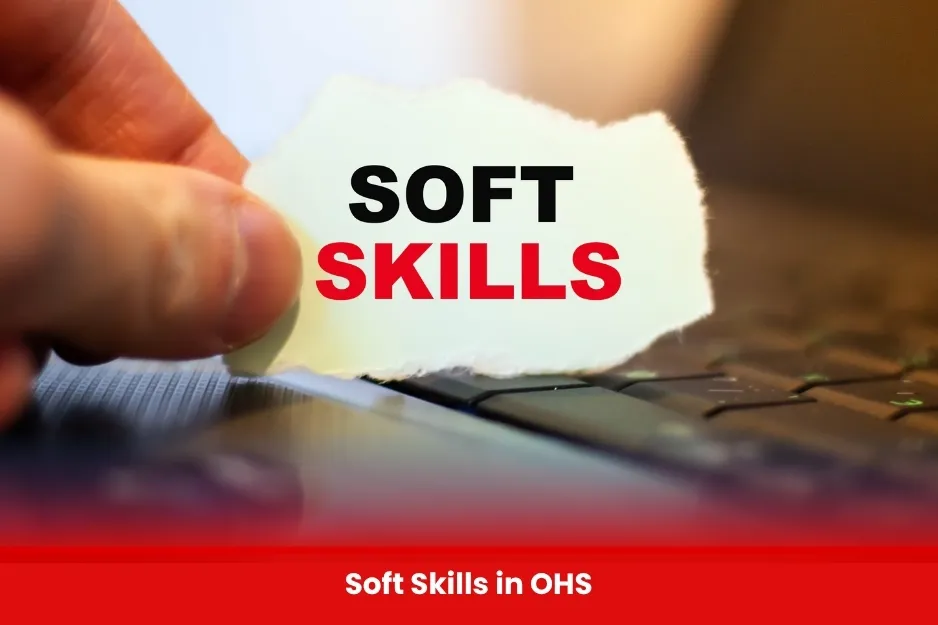Soft Skills in OHS
In the modern industrial landscape, ensuring workplace safety is no longer limited to technical controls, compliance checklists, or hazard identification alone. While technical knowledge forms the foundation of Occupational Health & Safety (OHS), the ability to communicate effectively, lead teams, and influence behavior plays a crucial role in achieving lasting safety outcomes.At BURAAQ UK, we recognize that strong soft skills—such as communication, leadership, teamwork, conflict resolution, and emotional intelligence—are essential for building a proactive safety culture and engaging all levels of the workforce.

Aim of Soft Skills in OHS
To develop and enhance the interpersonal and leadership skills of BURAAQ UK’s workforce, enabling them to communicate effectively, lead safety initiatives, resolve conflicts, and foster a positive and proactive safety culture throughout the organization.
Course Overview
Soft Skills in OHS
Educational Background:
- Minimum: Matric/GCSE or equivalent
- Preferred: Diploma or degree in Engineering, Safety Management, HR, or related fields
Professional Experience:
- Working professionals involved in safety, supervision, or team leadership roles
- Experience in industrial, manufacturing, or service sectors preferred but not mandatory
- Fresh graduates with interest in safety leadership are welcome
| Course Code | Curriculum Title | Credit | DLH |
|---|---|---|---|
| BUK1744-1 | Communication Skills for Safety | 3 | 10 |
| BUK1744-2 | Leadership and Motivation in Safety | 3 | 10 |
| BUK1744-3 | Conflict Resolution and Difficult Conversations | 3 | 10 |
| BUK1744-4 | Behavior-Based Safety (BBS) Principles | 3 | 10 |
| BUK1744-5 | Emotional Intelligence in Occupational Safety | 3 | 10 |
| BUK1744-6 | Teamwork and Collaboration for Safety | 3 | 10 |
Module 1: Communication Skills for Safety
- Importance of clear communication in safety
- Techniques for effective safety briefings and toolbox talks
- Active listening and feedback in the workplace
- Writing clear safety reports and incident documentation
Module 2: Leadership and Motivation in Safety
- Traits of effective safety leaders
- Leading by example and building trust
- Motivating teams to follow safety procedures
- Positive reinforcement and recognition
Module 3: Conflict Resolution and Difficult Conversations
- Understanding sources of conflict related to safety
- Strategies for managing resistance and objections
- Conducting respectful and productive safety discussions
- Negotiation and mediation basics
Module 4: Behavior-Based Safety (BBS) Principles
- Understanding human behavior and its impact on safety
- Identifying at-risk behaviors and influencing positive change
- Coaching and peer observation techniques
- Building a culture of personal accountability
Module 5: Emotional Intelligence in Occupational Safety
- Recognizing and managing emotions in high-stress situations
- Empathy and support for injured or affected workers
- Staying calm during emergencies and incident response
- Enhancing team morale through emotional awareness
Module 6: Teamwork and Collaboration for Safety
- The role of collaboration in preventing accidents
- Cross-departmental communication and cooperation
- Building effective safety committees and teams
- Sharing best practices and continuous improvemen
Module 7: Safety Culture and Engagement
- What defines a strong safety culture?
- Strategies to engage all employees in safety efforts
- Overcoming complacency and fostering ownership
- Measuring and sustaining safety culture improvements
- Safety Officers & EHS Professionals
- Supervisors & Line Managers
- HR & Compliance Staff
- Engineers & Technical Leads
- Team Leaders & Foremen
- Factory Owners & Senior Management
- Students & Fresh Graduates
- All Modules within this qualification are assessed internally by the approved training Centre and externally verified by BURRAQ UK. The program uses a criterion-referenced assessment approach to ensure that learners successfully meet all required learning outcomes.
- A Pass in any unit is granted only when the learner submits valid, reliable, and authentic evidence that demonstrates achievement of the assessment criteria. The Assessor is responsible for reviewing this evidence and confirming that the learner has attained the expected standard.
